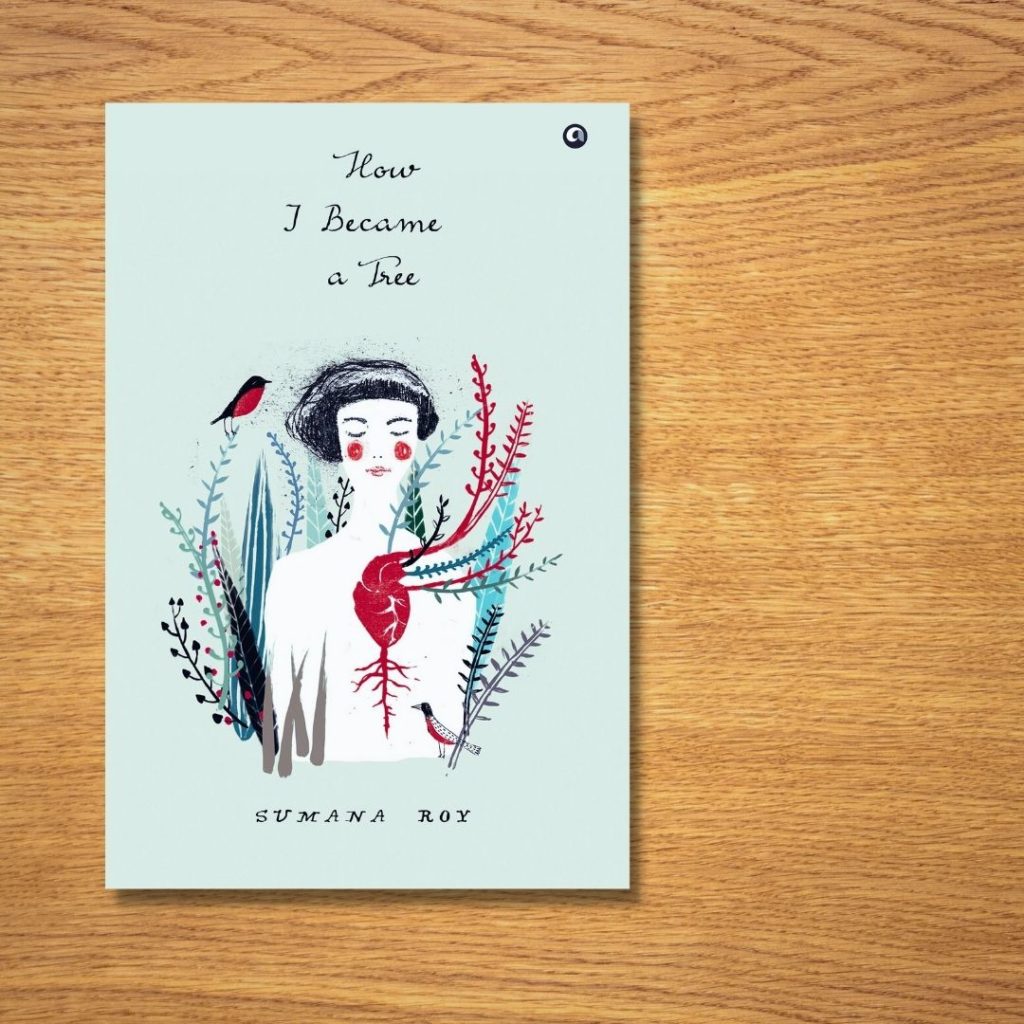
Publishers : Aleph Book Company.
Sumana Roy writes from Siliguri, a small town in sub-Himalayan Bengal, India. Her works include How I Became a Tree (2017), a work of non-fiction; Missing (2019), a novel; Out of Syllabus (2019), a collection of poems; and My Mother’s Lover and Other Stories (2019), a short story collection. Her unpublished novel Love in the Chicken’s Neck was longlisted for the Man Asian Literary Prize (2008).
An exquisite, lovingly crafted meditation on plants, trees, and our place in the natural world. Mixing memoir, literary history, nature studies, spiritual philosophies and botanical research, How I Became a Tree is a book that will prompt readers to think of themselves and the natural world that they are an intrinsic part of, in fresh ways. It is that rarest of things – A truly original work of art.
I grew up surrounded by gardens – the sprawling gardens of my paternal grandparents’ village, the meticulously planted terrace garden of my maternal grandfather who had passed away before I was born, and the small but verdant garden in the house that my parents rented in Bishnupur. My mother let me roam these places with no restrictions, but she was very disapproving of the plucking of leaves and flowers. It hurt the plants, she said, especially at night, when they are asleep. I grew up wondering about the inner lives of plants, feeling a strange kinship with them, and with characters from books who seemed to understand this feeling. I named plants and talked to them, fancying myself as a Shakuntala talking to a Banatoshini.
As an adult, nothing makes me happier than an unkempt garden that can expand into forests in my imagination, or getting drenched in a downpour and imagining what it would feel like to be a tree, soaking in the magic of the droplets. I am the opposite of Aparna Sen’s character in Baksho Bodol, who doesn’t wear blue or green because she sees so much of these colours around her. I adorn myself and my surroundings with as much green as possible, in a desperate mimicry of the trees and plants that I am so drawn towards. When N, who probably knows me better than anyone else, came across a review of a book called How I Became a Tree in 2017, he had to buy it for me.
But as it often happens even with books that seem perfect, I did not read it immediately. I read it last year, when the evening ritual of watering the plants in my terrace garden had become a daily respite from the confines of life during a pandemic, and I was trying to talk myself into getting rid of weeds and tiny, helpless insects from my garden.
The book was born out of Roy’s desire to live a life that is peaceful and slow, to not be “bulldozed by time”, to live like a tree. It is a celebration of the lives of trees, and of the many humans, who, across history, have tried to get closer to them through art, literature, science, and worship. Roy moves from literature to philosophy, from botany to Buddhist scriptures, with the ease of a leisurely saunter in a beloved garden. She talks, in beautiful prose, of the lives of forest-dwellers, of the stories from folklore around the world that has women turning into trees to escape abuse, of what sex might feel like to a tree, of what we really mean when we refer to plants in our care as our children – and how we reconcile that with mutilating their bodies for food. Questions that I had myself thought about but had never expected to encounter in print were mused upon – what did Jagadish Chandra Bose feel when he had to inflict pain on plants to prove that they felt pain?
This book is a triumph, a defiant case for really seeing and thinking about the natural world, and a plea to reconsider our cluttered existence within it. There are gaps in reasoning at some places in the book that were not completely compensated for with earnestness. But they can be easily overlooked for the importance of the narrative, the beauty of the prose, and its potential to open readers’ eyes to the tyranny of industrial time over the rhythms of the natural world.

